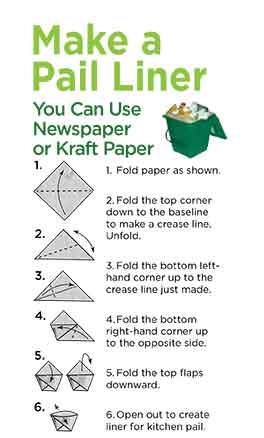Reduce Food Waste and Food Scraps Collection Program Tips
Prevent Food Waste
- 40% of food in America is wasted.
- 25% of the food we each buy never gets eaten.
- 90% of us throw away food too soon.
- Each of us tosses nearly 300 pounds of food each year.
- $1600 — An average family of four throws out $1600 of food each year ($400 per person)
Wasted food also wastes the energy and water used to create it, and the fuel and money used to bring it from the farm to your table.
Rotting food in our landfills creates methane, a powerful greenhouse gas. Preventing food waste is one of the easiest ways we can make an impact to reduce climate change. Click here for more info about California’s efforts to reduce Climate Pollution.
BE FOODWISE…SMALL STEPS CAN REDUCE FOOD WASTE!
STORE ITEMS PROPERLY – Learn how to store food best and how long it should stay there.
SHOP YOUR FRIDGE – Get creative, use food you already have on hand.
MEAL PLAN – Use the interactive Meal Prep Mate and Guest-imator.
TRY THE FOODKEEPER APP – Use food while at peak quality and reduce waste.
FIND MORE FOOD WASTE PREVENTION TIPS AT:
FIND RESCUE & FOOD BANK RESOURCES:
REDUCE FOOD WASTE BY UNDERSTANDING FOOD PRODUCT DATE LABELS.
“BEST IF USED BY/BEFORE” – Indicates when a product will be of best flavor or quality. Not a purchase/safety date.
“SELL-BY” – Tells the store how long to display the product for sale for inventory management. Not a safety date.
“USE-BY” – Last date recommended for use of the product while at peak quality. Not a safety date except when used on infant formula.
Regardless of the date, consumers should always evaluate the quality of food prior to its consumption.
DON’T THROW IT OUT!**

Try these tips to extend the life of your food and reduce food waste!
WILTED FOOD
Soaking in ice water for 5 to 10 minutes may reinvigorate wilted veggies.
STALE FOOD
Toast stale chips and crackers for a minute or two in a regular or toaster oven to crisp them.
SALTY FOOD
Add vinegar, lemon juice, or brown sugar—or dilute a soup or sauce with water, crushed tomatoes or unsalted broth.
PROPER SORTING MAKES A DIFFERENCE!
Use the handy kitchen pail to put inedible food scraps and food-soiled paper in your ORGANICS cart as a last resort.

Store your non-edible food scraps and food-soiled paper in the pail until you empty it into the green organics/compost cart or bin. Please do not place the pail at the curb for collection.
ALL FRESH, FROZEN, COOKED & MOLDY FOOD SCRAPS, & FOOD-SOILED PAPER BELONG, INCLUDING:
- all leftover food
- peels, pits & rinds
- eggs & dairy products
- bread, rice, pasta & other grains
- meats & bones
- coffee grounds & filters
- tea leaves & paper tea bags
- food-soiled paper take-out containers, napkins, plates, cups & towels
- food-soiled newspaper & paper bags

TIPS TO KEEP YOUR HANDY KITCHEN PAIL CLEAN:
- You can line your pail with a paper bag, paper towels, napkins, or newspaper. (PLEASE NO PLASTIC BAGS)
- Wipe out or rinse the pail with soapy water.
- Try sprinkling baking soda in the pail to absorb odors.
- Freeze your meat scraps and place them directly into the green container on collection day.

Sources:
*www.fsis.usda.gov
**www.savethefood.com
**Waste Free Kitchen Handbook, Dana Gunders, 2015.
